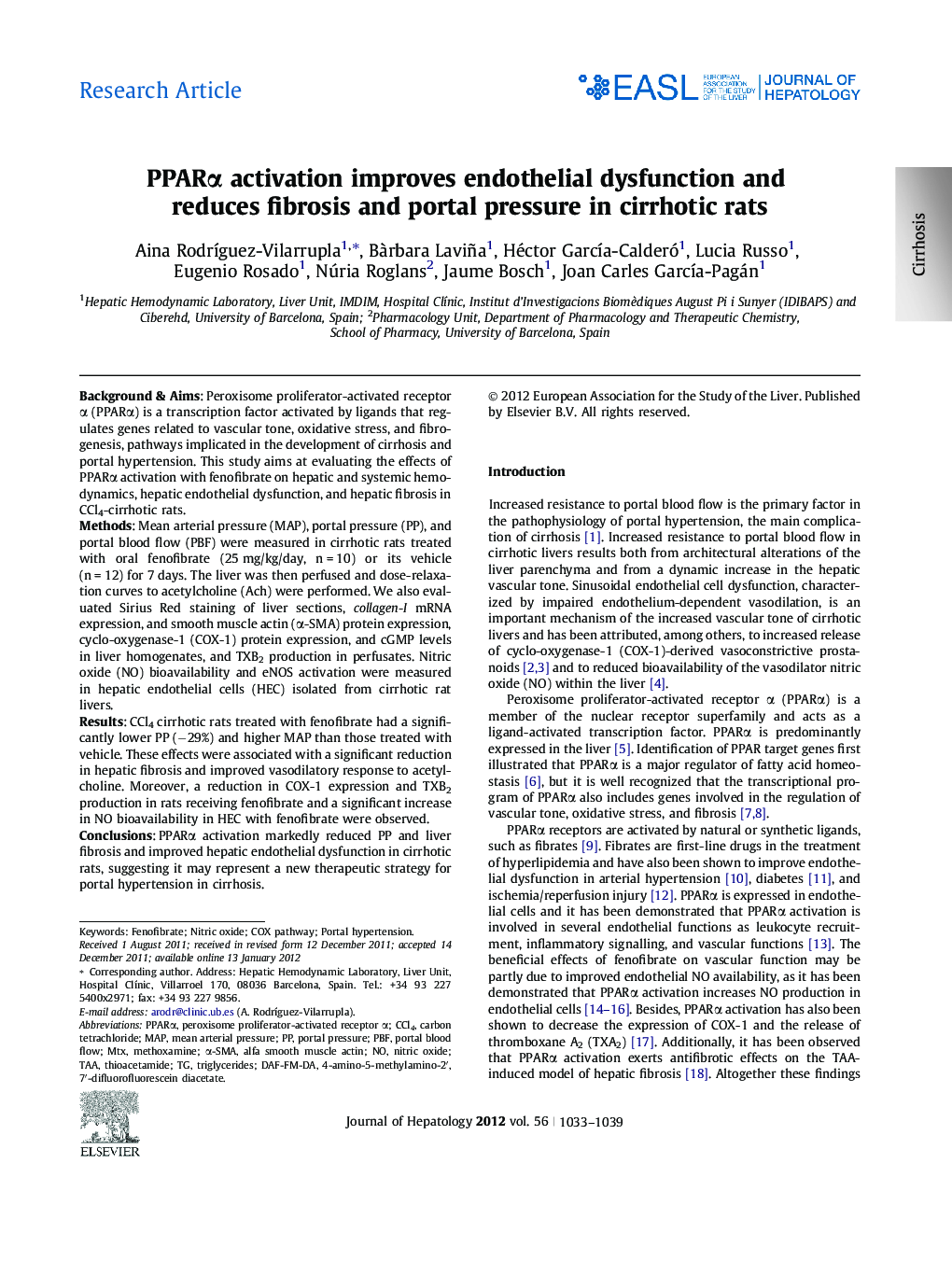| Article ID | Journal | Published Year | Pages | File Type |
|---|---|---|---|---|
| 6104515 | Journal of Hepatology | 2012 | 7 Pages |
Background & AimsPeroxisome proliferator-activated receptor α (PPARα) is a transcription factor activated by ligands that regulates genes related to vascular tone, oxidative stress, and fibrogenesis, pathways implicated in the development of cirrhosis and portal hypertension. This study aims at evaluating the effects of PPARα activation with fenofibrate on hepatic and systemic hemodynamics, hepatic endothelial dysfunction, and hepatic fibrosis in CCl4-cirrhotic rats.MethodsMean arterial pressure (MAP), portal pressure (PP), and portal blood flow (PBF) were measured in cirrhotic rats treated with oral fenofibrate (25 mg/kg/day, n = 10) or its vehicle (n = 12) for 7 days. The liver was then perfused and dose-relaxation curves to acetylcholine (Ach) were performed. We also evaluated Sirius Red staining of liver sections, collagen-I mRNA expression, and smooth muscle actin (α-SMA) protein expression, cyclo-oxygenase-1 (COX-1) protein expression, and cGMP levels in liver homogenates, and TXB2 production in perfusates. Nitric oxide (NO) bioavailability and eNOS activation were measured in hepatic endothelial cells (HEC) isolated from cirrhotic rat livers.ResultsCCl4 cirrhotic rats treated with fenofibrate had a significantly lower PP (â29%) and higher MAP than those treated with vehicle. These effects were associated with a significant reduction in hepatic fibrosis and improved vasodilatory response to acetylcholine. Moreover, a reduction in COX-1 expression and TXB2 production in rats receiving fenofibrate and a significant increase in NO bioavailability in HEC with fenofibrate were observed.ConclusionsPPARα activation markedly reduced PP and liver fibrosis and improved hepatic endothelial dysfunction in cirrhotic rats, suggesting it may represent a new therapeutic strategy for portal hypertension in cirrhosis.
